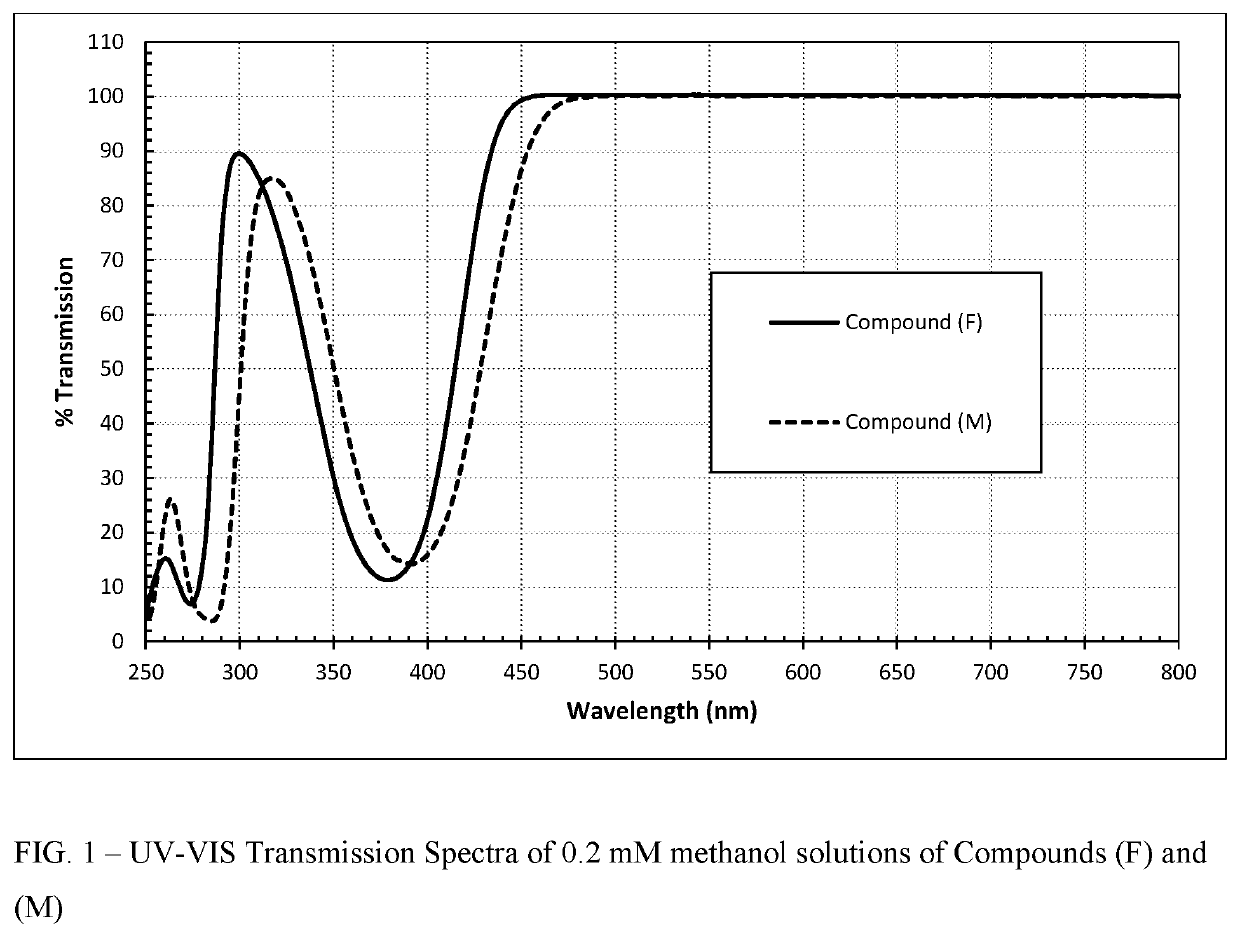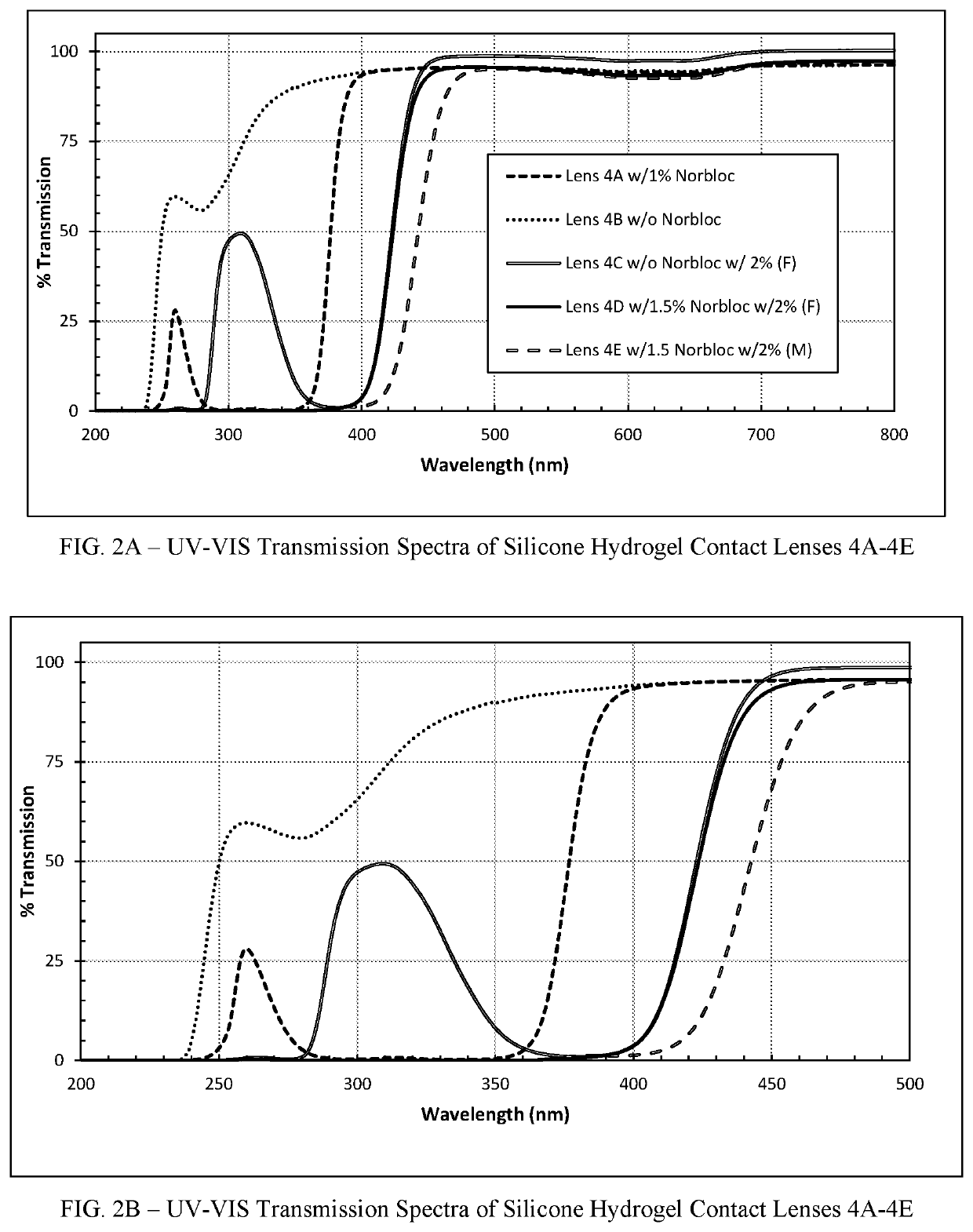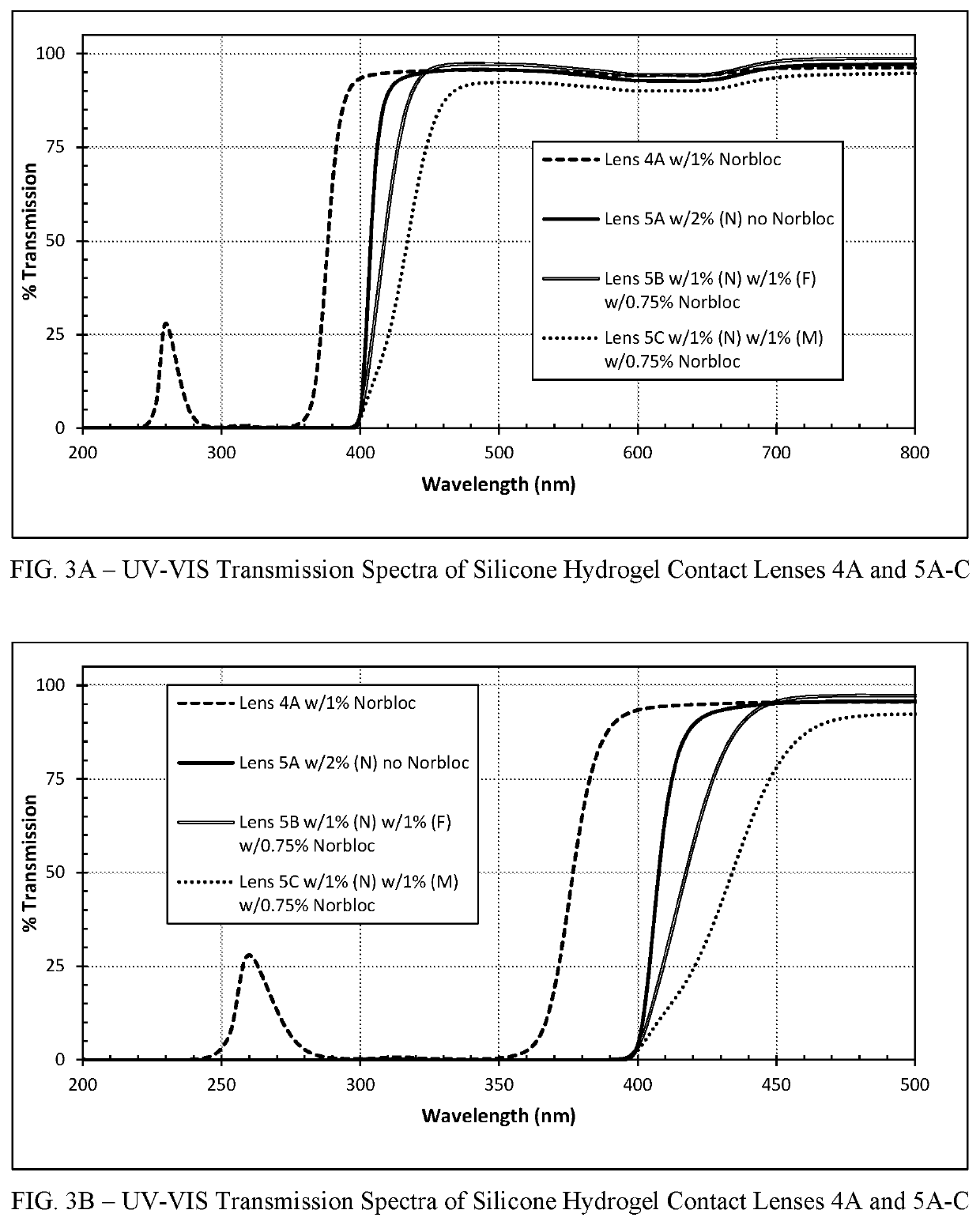Polymerizable absorbers of UV and high energy visible light
a technology of visible light and absorbers, applied in the field of ultraviolet light and high energy visible light absorbers, can solve the problems of ineffective protection of the back of the eye, 400 nm, cellular damage, etc., and achieve the effect of ensuring covalent incorporation into the final produ
- Summary
- Abstract
- Description
- Claims
- Application Information
AI Technical Summary
Benefits of technology
Problems solved by technology
Method used
Image
Examples
example 1
of Compound (F) as Shown in Scheme 2
[0294]
7-Hydrox-3,4-dihydronaphthalen-1 (2H)-one (A)
[0295]A suspension of 7-methoxy-3,4-dihydronaphthalen-1(2H)-one (334.0 grams, 1.90 moles, 1.0 equiv.) and anhydrous aluminum chloride (782 grams, 5.86 moles, 3.1 equiv.) in anhydrous toluene (8 L) was heated at 85° C. for 30 minutes, at which point LCMS indicated the reaction was complete. The black reaction mixture was cooled to 0° C. and poured into ice / water mixture (8.7 L) and stirred 5 minutes. The product was extracted with ethyl acetate (3×7 L). The combined organic layers were washed with water (2×1.7 L) and saturated brine (1.7 L). The organic layer was concentrated under reduced pressure. The residue was triturated with toluene (2.5 L) overnight. The solids were filtered, rinsed with toluene (0.9 L) and heptanes (0.9 L) to give compound (A) (301 g, 97% yield, >95% purity) as a beige solid. Prior to conversion into compound (B), compound (A) was purified as follows: compound (A) (195.4 gr...
example 2
of Compound (M) as Shown in Scheme 3
[0300]
6-(4,4,5,5-Tetramethyl-1,3,2-dioxaborolan-2-yl)chroman-4-one (G)
[0301]A mixture 6-bromo chroman-4-one (100.85 grams, 444.156 mmol, 1 equiv.), potassium acetate (130.77 grams, 1332.467 mmol, 3 equiv.) and bis(pinacolato)diboron (135.35 grams, 532.985 mmol, 1.2 equiv.) in 1,4-dioxane was sparged with nitrogen for 30 minutes. [1,1′-Bis-(diphenylphosphino)ferrocene]dichloropalladium(II) complex (18.14 grams, 22.208 mmol, 0.05 equiv.) in dichloromethane was added, and the mixture was heated at 95° C. overnight. After cooling to room temperature, the mixture was filtered through Celite, and the filter cake was washed with ethyl acetate (2×500 mL). The filtrate was washed with water (500 mL) and saturated brine (500 mL). The combined aqueous layers were back-extracted with ethyl acetate (2×300 mL). The combined organic layers were dried over sodium sulfate, filtered, and concentrated under reduced pressure. The residue was purified on a Biotage-75 ...
example 3
Synthesis of (Z)-3-hydroxy-1-(naphthalen-2-yl)-3-(4-vinylphenyl)prop-2-en-1-one (N) as shown in Scheme 4
[0309]
[0310]To a 250 mL round bottomed flask containing a magnetic stirring bar, methyl 4-vinylbenzoate (2 grams, 12.3 mmol) and NaH (4.9 grams, 10 eq. 60% sodium hydride in oil suspension) were added. A pressure equalizing addition funnel containing 50 mL of dried THF (molecular sieves) was attached, and the reaction system purged with dry nitrogen gas for 20 minutes. Thereafter, the THF was added slowly with vigorous stirring. 2-Acetonaphthone (3.5 grams, 12.3 mmol) and a small amount of hydroquinone were dissolved in 10 mL dried THF and added dropwise to the reaction mixture. The contents of the reaction vessel were stirred for 12 hours. Then, the reaction flask was placed in an ice bath, and aqueous hydrochloric acid was added slowly to react with excess NaH. The volatile components were removed by rotary evaporation, and the residual dissolved / suspended in DCM. After filtrati...
PUM
| Property | Measurement | Unit |
|---|---|---|
| water content | aaaaa | aaaaa |
| contact angle | aaaaa | aaaaa |
| wavelengths | aaaaa | aaaaa |
Abstract
Description
Claims
Application Information
 Login to View More
Login to View More - R&D
- Intellectual Property
- Life Sciences
- Materials
- Tech Scout
- Unparalleled Data Quality
- Higher Quality Content
- 60% Fewer Hallucinations
Browse by: Latest US Patents, China's latest patents, Technical Efficacy Thesaurus, Application Domain, Technology Topic, Popular Technical Reports.
© 2025 PatSnap. All rights reserved.Legal|Privacy policy|Modern Slavery Act Transparency Statement|Sitemap|About US| Contact US: help@patsnap.com



